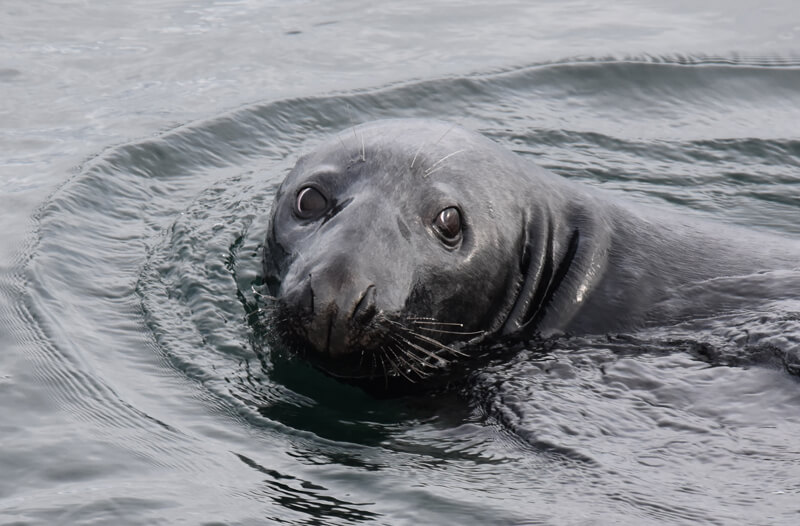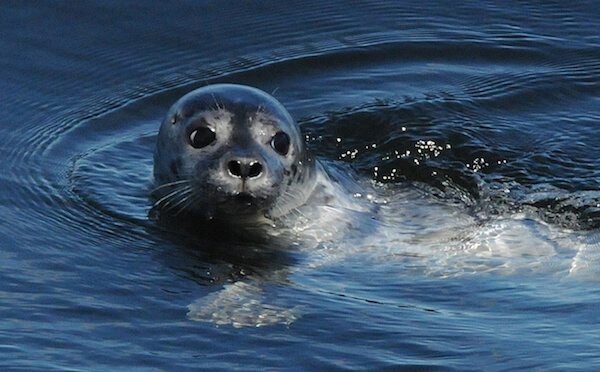“72!” That’s how many seals our collaborator Laeticia Desbordes is lucky enough to observe and carefully tally early this week off Cap-aux-Os, in Gaspé Bay. Most of them appear to be harbour seals. Soaking up the sun’s rays on the ice, they seem to be enjoying this early spring. Spring, already? “Yes,” says Jacques Gélineau, who did not fail to notice the arrival of crows in Sept-Îles, which are considered harbingers of more pleasant weather.
Warmer temperatures, more abundant food: for many, spring resonates as the ideal season for mammals to give birth. However, for visiting or resident seals in the St. Lawrence, this is not necessarily the case!
When do the seals of the St. Lawrence seals give birth?
The pupping periods for the main species that can be observed in the Estuary or Gulf of St. Lawrence are as follows:
Grey seal: late December to early February
Harp seal: late February to mid-March
Hooded seal: mid-March to late March
Harbour seal: mid-May to early July
For all of these seals, mating often takes place shortly after pupping, namely at the end of the nursing period. Depending on the species, this lasts from a few days (hooded seal) to about three or four weeks (harbour seal).
One would think that, with simple math, one could take the pupping period and the mating period and calculate the duration of seal gestation. However, in all four of these species, gestation includes a break!
Fetal development on pause!
In many mammals, a temporary halt in the development of the embryo can be observed. This pause can be optional or compulsory and its duration varies from one species to another. Thanks to this phenomenon, pupping always seems to coincide with the period most favourable to the survival of the species’ offspring.
Many elements vary from one species of seal to another, including size in adulthood, quality of the young’s fur and place of reproduction. This is why the most favourable pupping periods for the seals of the St. Lawrence also differ!









